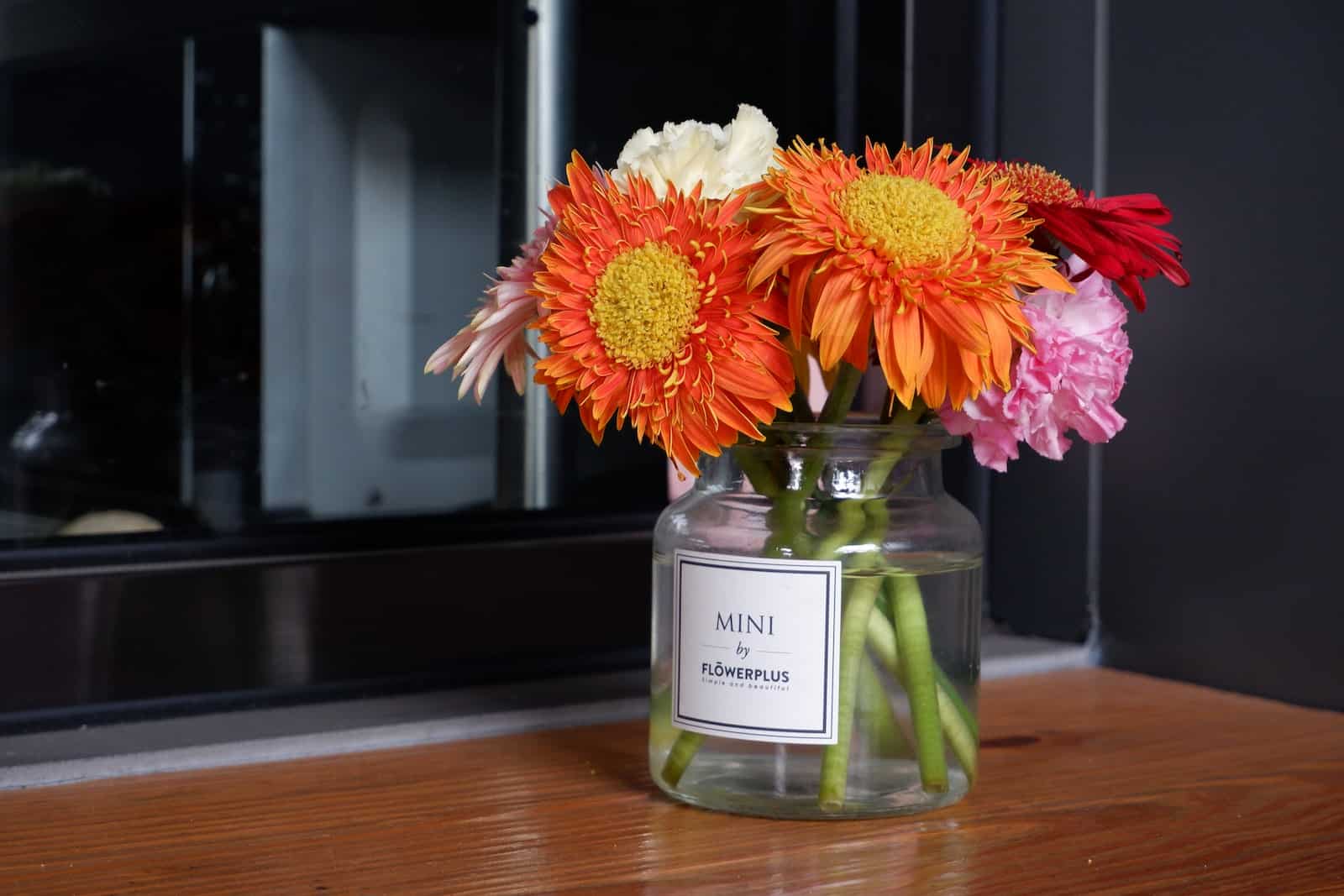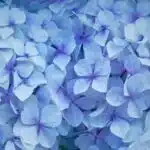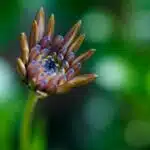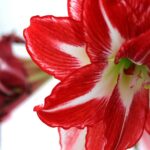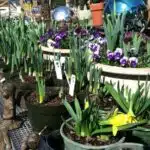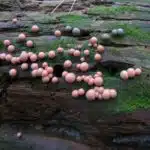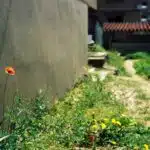If you’re looking for a way to brighten up your garden, perennial flowers are an excellent choice. Perennial plants come back year after year and will keep your garden in bloom all season long. Not only that, but they can also help attract wildlife to your garden, adding beauty and serenity to your outdoor space. From classic favorites like lavender and sunflowers to rarer picks like orange coneflower and hardy geraniums, there are plenty of choices when it comes to choosing the best perennial flowers for your garden.
Whether you’re a beginning gardener or an experienced pro, the right perennial flowers can help bring color and life into any outdoor space. Not only do these perennials make for stunning aesthetic additions, but they’re also incredibly beneficial for the environment; many species of pollinators rely on them as a food source throughout the year. As such, growing perennial plants is a great way of giving back to nature while beautifying your garden at the same time!
In this article, we’ll explore 26 of the best perennial flowers that will stay in bloom from spring through fall – so you can enjoy the beauty of your garden all year round! From unique colors and textures to drought-tolerant varieties, we’ve got something for everyone. Read on to find out which perennial flowers are right for you!
list of 26 perennial flowers that have extended blooming periods and are known for their beauty and hardiness.
- Black-eyed Susan (Rudbeckia hirta): These bright yellow flowers with a black center bloom from midsummer to fall, attracting bees and butterflies.
- Blanket Flower (Gaillardia): These daisy-like flowers come in bright shades of red, orange, and yellow and bloom from early summer to fall.
- Coreopsis (Coreopsis grandiflora): These cheerful yellow or orange flowers bloom from early summer until the first frost.
- Coneflower (Echinacea purpurea): These pink, purple, or white flowers bloom from midsummer to fall and are attractive to pollinators.
- Balloon Flower (Platycodon grandiflorus): These delicate blue or white flowers bloom from midsummer to early fall.
- Peony (Paeonia): These fragrant flowers come in shades of pink, white, and red and bloom in late spring and early summer.
- Shasta Daisy (Leucanthemum x superbum): These classic white daisies with a yellow center bloom from early summer to fall.
- Speedwell (Veronica spicata): These spiky blue, pink, or white flowers bloom from late spring to midsummer.
- Bleeding Heart (Dicentra spectabilis): These heart-shaped pink or white flowers bloom in spring and early summer.
- Russian Sage (Perovskia atriplicifolia): These gray-green shrubs have tiny purple-blue flowers that bloom from midsummer to fall.
- Salvia (Salvia nemorosa): These blue or purple flowers bloom from midsummer to fall and attract pollinators.
- Iris (Iris germanica): These showy flowers come in a range of colors and bloom in late spring to early summer.
- Catmint (Nepeta x faassenii): These gray-green shrubs have clusters of lavender-blue flowers that bloom from early summer to fall.
- Sedum (Sedum spectabile): These succulent plants have clusters of pink, red, or white flowers that bloom from late summer to fall.
- Dianthus (Dianthus barbatus): These fragrant flowers come in shades of pink, white, and red and bloom from late spring to early summer.
- Daylily (Hemerocallis): These colorful flowers bloom in a range of colors from early summer to fall.
- Lavender (Lavandula): These fragrant shrubs have clusters of purple, pink, or white flowers that bloom from late spring to midsummer.
- Bee Balm (Monarda didyma): These tubular flowers come in shades of pink, red, and purple and bloom from midsummer to fall.
- Hellebore (Helleborus): These unusual flowers come in shades of pink, white, and green and bloom in late winter to early spring.
- Yarrow (Achillea millefolium): These fern-like plants have clusters of white, pink, or red flowers that bloom from midsummer to fall.
- Phlox (Phlox paniculata): These fragrant flowers come in shades of pink, white, and purple and bloom from midsummer to early fall.
- Blepharopsis (Blepharopsis mendica): These striking blue or purple flowers bloom from late spring to midsummer, and their tall spikes make a bold statement in the garden.
- Baptisia (Baptisia australis): These tall plants have spikes of blue, purple, or white flowers that bloom in late spring and early summer.
- Columbine (Aquilegia): These unique flowers have long spurs and come in a range of colors, blooming from late spring to early summer.
- Astilbe (Astilbe): These feathery plumes come in shades of pink, red, white, and purple and bloom from late spring to early summer.
- Veronica (Veronicastrum virginicum): These tall spikes of white or pink flowers bloom from midsummer to early fall and are attractive to pollinators.
These perennial flowers are all hardy and low-maintenance, making them great choices for a variety of garden settings. However, it’s important to keep in mind that not all of these flowers will be suitable for all climates and growing conditions, so be sure to choose the ones that are best suited to your area. Additionally, while these flowers may have extended blooming periods, they will still have a specific time of year when they are at their peak.
1. What Are Perennial Flowers?
Perennial flowers are plants that come back year after year. They’re a great way to brighten up any garden and provide long-term color and beauty. You don’t have to replant them every spring, so they save you time and money. Plus, perennial flowers are strong, hardy plants that can withstand the changing seasons and weather.
Different types of perennial flowers offer unique advantages for your garden. Some may bloom in early spring while others provide color throughout the summer months. For example, daylilies are a popular choice with their showy blossoms in shades of orange, yellow, pink or white. On the other hand, coreopsis is an easy-care plant that adds texture to flower beds with its feathery foliage.
When it comes to adding vibrant colors to your garden without spending too much time or effort on maintenance, perennial flowers are an ideal choice. With varieties ranging from tall spikes of foxglove to low growing mats of creeping phlox, there’s something for everyone—no matter what your gardening style or skill level is! From providing long-term beauty to requiring minimal attention, these flowering plants have many benefits worth exploring further.
2. Benefits Of Planting Perennial Flowers
Ah, the beauty of perennial flowers! They bring a touch of elegance to any garden, but what’s even more special is that they keep on blooming throughout the year. The benefits of planting perennial flowers are seemingly endless, and today we’re going to take a look at some of them:
1) Low Maintenance: Unlike annuals which require regular replanting, perennials come back every year without any extra effort.
2) Colorful Diversity: With a wide variety of shapes, sizes, and colors available, there’s something for everyone when it comes to perennials.
3) Long-Lasting: Planting perennials means that you can enjoy your garden for years to come.
4) Adaptability: Perennials are often hardier than annuals and can withstand harsher climates, making them ideal for gardens in all kinds of regions.
These wonderful plants have so much to offer! From their low maintenance requirements to their long-lasting beauty, they really are the perfect choice for anyone looking to spruce up their garden without too much effort or expense. Now let’s move on to exploring the types of perennial flowers available!
3. Types Of Perennial Flowers
Perennial flowers can be an invaluable addition to any garden, blooming year after year with minimal maintenance. In this section, we’ll explore the types of perennial flowers that are available to plant in your own garden.
Firstly, there are a wide variety of colors and textures of perennial flowers. From delicate pink petunias to deep purple clematis, you’re sure to find something that fits the look and feel of your garden. Here are some of the most popular types:
- Roses – Whether climbing or shrub varieties, roses come in an array of colors and sizes
- Lavender – A fragrant evergreen flower perfect for growing in containers or borders
- Peonies – Large blooms in shades from white to pink to red make for a stunning display
- Chrysanthemums – Available in a variety of colors and shapes, these long-lasting flowers can thrive with minimal effort.
In addition to their beauty and diversity, perennial flowers offer a number of other benefits as well. They provide a consistent source of pollen for pollinators like bees and butterflies, helping improve biodiversity in the area. Perennial flowers also require less water than annuals since they are better adapted to drought conditions, making them ideal for areas with limited water resources. And since they don’t need to be replanted every season, they’re much more cost-effective over time than annuals as well.
As you can see, there are many advantages to adding perennial flowers to your garden – and plenty of options too! Next up we’ll take a closer look at one particular type: geraniums…
4. Geraniums
Geraniums are like a ray of sunshine, radiating joy and warmth in gardens all year round. Their bright blooms and subtle lemon scent make them a welcome addition to any outdoor space. Whether you choose upright-growing varieties or trailing forms, geraniums can be planted in beds, containers, and hanging baskets for a show-stopping display.
Geraniums come in a range of vivid colors that will bring your garden to life. Pink, red, white, purple, salmon – the options are endless! Plus, many varieties feature attractive variegated foliage that provide green accents in between blooms. For maximum flowering potential, deadhead spent flowers regularly to encourage more buds to form.
A low-maintenance perennial flower, geraniums will come back bigger and better each year with minimal effort from you. With proper care and placement in full sun or partial shade (depending on variety), these cheerful plants will continue producing gorgeous blooms until the first frost arrives. As you move onto the next section about Shasta daisies, consider adding some geraniums to your garden for an added splash of color!
5. Shasta Daisies
Like a beautiful summer night, Shasta daisies are a beloved perennial flower that bloom all year. They represent joy and fulfillment – symbolizing the hope of an eternal summer. As part of any garden, these flowers add beauty and delight to any area. Here are four reasons why these daisies should be a part of your garden:
1) Shasta daisies are easy to care for and maintain. All they need is several hours of sun each day, along with weekly watering and occasional fertilizer. Plus, they don’t require deadheading like other plants do.
2) They come in several colors, including white, pink, peach, yellow and lavender. This means you can create an array of color combinations that will bring life to any outdoor space!
3) They attract beneficial bugs such as pollinators like butterflies and bees which help support other plants in your garden.
4) These perennials will give you blooms from spring through fall – making them the perfect addition to any garden that needs brightening up throughout the year.
Shasta daisies are an excellent choice for anyone looking for long-lasting beauty in their gardens that will bring joy for years to come. With their ease of maintenance and vibrant colors, they truly make a great addition to any outdoor space! Transitioning into the next section about black-eyed susans, it is clear that there are endless possibilities when it comes to choosing perennial flowers to make your garden bloom all year round!
6. Black-Eyed Susans
Black-eyed susans, or rudbeckia, are a wonderful addition to any garden. With their bright yellow petals and dark centers, they add an eye-catching touch that lasts all year round. Not only are black-eyed susan perennials attractive, they’re also easy to care for. Just plant these flowers in well-drained soil in full sun and enjoy their beauty with minimal effort!
Black-eyed susans can provide beautiful contrast against other plants when planted together in a flowerbed or massed together in a large area. For example, you could place them near purple coneflowers or coreopsis to create stunning visual interest. You can even deadhead the blooms to encourage reblooming throughout the season. Plus, these flowers attract butterflies and bees to your garden, so you get the added bonus of bolstering your local biodiversity!
When it comes to black-eyed susans, there’s no shortage of possibilities for creating stunning arrangements that last all year long. With their low maintenance needs and vibrant colors, these perennials are an ideal choice for anyone looking for easy but effective solutions for outdoor spaces. Moving on from black-eyed susans now—let’s take a closer look at Rudbeckia next!
7. Rudbeckia
The seventh perennial flower on our list is the rudbeckia, a resilient bloom that will bring bright and cheerful colors to your garden year-round. For example, my aunt’s garden was filled with these beautiful yellow and orange flowers, radiating warmth and bringing life to her entire backyard.
These hardy plants are easy to take care of and they thrive in many different types of soil. They also attract plenty of bees and butterflies during their long blooming season. This makes them not only aesthetically pleasing but beneficial for the environment as well.
In addition to the beauty these flowers bring to your garden, they are also incredibly low maintenance. All you need to do is plant them in a sunny spot and make sure they get enough water—that’s it! Now you can sit back and enjoy the energetic display of color that this resilient flower provides all year round.
And with that, we move on to the next flower on our list: lavender!
8. Lavender
Despite its soothing reputation, lavender can pack an unexpected punch in the garden. With vibrant colors and a captivating fragrance, this perennial flower is sure to brighten up any landscape. This amazing plant has been used for centuries as a medicinal herb and makes an excellent addition to any garden, despite its reputation as a delicate flower.
Lavender is incredibly easy to care for. It requires very little water and can survive in all types of climates – including hot summers, cold winters, and even desert-like conditions. Plus, its fragrant aroma will keep your garden smelling fresh all year round! Despite its hardiness, however, it’s essential to remember that lavender needs plenty of direct sunlight in order to thrive and bloom.
The best part about lavender is its versatility; it can be used to make potpourri, perfumes, teas, and more! For those looking for a unique way to add color to their garden without the hassle of watering or fertilizing – lavender is the perfect choice! With its vibrant colors and delicate fragrance, it’s no wonder why this charming plant has been around for so long. So why not give it a go? You might just find yourself pleasantly surprised with the results!
9. Daylilies
Some may think that daylilies are too delicate and temperamental for a perennial flower, but these plants actually bloom for weeks with very little maintenance. Daylilies come in a wide range of colors and sizes, making them an attractive addition to any garden. Whether planted in full sun or partial shade, these flowers will reward you with long-lasting color all season long.
Daylilies have thick roots that allow them to thrive in any kind of soil, allowing them to survive droughts and harsh winters easily. They don’t need to be pruned or fertilized often either – which makes them the perfect easy-growing plant for busy gardeners! Additionally, daylilies aren’t prone to disease or insect problems like other perennials.
These hardy flowers are a great choice for beginner gardeners looking to add low maintenance beauty to their outdoor space. With a variety of sizes, shapes, and colors available, daylilies can be used in any landscape design – from traditional formal gardens to modern cottage styles. So if you’re looking for colorful blooms all year round, why not give daylilies a try?
10. Yarrow
Yarrow is another great perennial flower that blooms all year long. This bloom comes in a variety of colors, ranging from yellow and white to pink and red, providing an array of options to choose from. Yarrow is also known for its hearty nature; it’s drought-resistant and can thrive in poor soil conditions. Additionally, this perennial flower attracts birds and bees, making it a great addition to any garden.
For caretakers looking for a low maintenance flower choice, yarrow is the perfect choice. It requires minimal pruning and only occasional fertilization to keep it healthy. Moreover, yarrow spreads quickly and can fill larger spaces with ease—providing an abundance of color for your garden.
Yarrow is an incredibly versatile plant that can be used in many different ways. From accenting walkways to brightening up rock gardens, yarrow provides color throughout every season and adds beauty to any outdoor space. So if you’re looking for a reliable bloom that’ll stay vibrant all year long, yarrow might be the perfect fit! Onwards then to coneflowers…
11. Coneflowers
Glorious! Majestic! Unbelievable! Coneflowers are the epitome of beauty, gracing any garden with their showy petals and vibrant colors. They bring an air of majesty to any outdoor space, and they bloom all year long. That’s right, coneflowers don’t just bring one season of joy—they bring a lifetime of delightful pleasure.
Coneflowers come in a variety of colors: deep pinks, bright yellows, and vivid purples. The plant can reach up to three feet tall, adding an impressive touch to any landscape. And these flowers aren’t just eye candy; they attract butterflies and other pollinators too. Best of all, coneflowers are low-maintenance plants that require minimal care and thrive in both sun or shade.
These beautiful perennials are a wonderful choice for anyone looking for a stunner that will last throughout the year. So if you’re looking to add some pizzazz to your garden without breaking the bank or spending hours tending to it, look no further than coneflowers—the perfect perennial flower for all occasions! Transitioning seamlessly into the next section about ‘hosta’…
12. Hosta
Could it be true that hosta, a perennial flower that blooms all year, is the perfect flower for any garden? The answer is yes! Hosta plants come in many sizes and colors, making them ideal for any type of landscaping. From small evergreen varieties to large vibrant ones, these flowers can add a splash of color to any garden.
Hostas are also incredibly hardy and can survive even in the harshest conditions. They grow well in both sun and shade and need minimal care. In fact, they are so low-maintenance that they are often referred to as “lazy man’s perennials”! Best of all, they come back every year with no effort from you!
Hostas make a great addition to any garden. Their bold foliage provides texture and color throughout the year. Plus, their ability to thrive in various climates makes them an ideal choice for gardens all over the world. So if you’re looking for the perfect perennial flower that will bloom all year round, look no further than hosta!
13. Sedum
For those looking to add a touch of vibrancy and beauty to their garden that will last all year, sedum is an excellent choice. Take the case of Rebecca, who wanted her garden to be in full bloom from spring all the way through winter. She settled on planting sedum as it is a hardy and low-maintenance flower that can handle most weather conditions and provides long-lasting color throughout the year.
Sedum enjoys full sun or partial shade and does not require much pruning or fertilizing. It is also drought tolerant, so Rebecca need not worry about constantly watering her plants. This perennial flower has attractive foliage in shades of green, purple, or blue with vibrant blooms in pink, yellow, or white – giving Rebecca’s garden a wonderful pop of color throughout the seasons.
If you are looking for an easy-to-care-for flower that will bring life to your garden all year round, then sedum should definitely be on your list! Its robust foliage and stunning blooms make it an ideal choice for any gardener looking to bring some extra flair to their outdoor space.
14. Coreopsis
The 14th best perennial flower is Coreopsis, a bright and reliable bloomer that offers vibrant colors of yellow and red. This flowering plant intertwines beauty with ease of maintenance, making it a great choice for any garden. It’s an ideal option to fill in large areas of the garden or meadow due to its tall height and spreading nature.
Coreopsis can endure drought-like conditions, yet still produce its beautiful flowers year after year. Its petals are strong enough to withstand rainstorms and lawnmowers alike, allowing gardeners to enjoy their blooms without worrying about damage. Plus, the flowers will attract pollinators like butterflies and bees for an even more varied display of life in your backyard space.
Whether you’re looking for an evergreen accent or simply want some extra color in your landscape, Coreopsis is a great choice. With its hardy nature and low maintenance requirements, this perennial flower is sure to bring delight to your gardening endeavors for years to come. As you move on from here, keep in mind these tips for planting perennial flowers so you get the most out of your Coreopsis plants!
15. Tips For Planting Perennial Flowers
Planting perennial flowers is like painting a masterpiece. Every stroke of the brush, every seed planted brings us closer to a beautiful and lasting art. Let these tips be your guide to creating an incredible garden that will bloom all year long.
1) Begin by preparing the soil with compost for optimal growing conditions.
2) Plant perennials in clusters or groupings for maximum impact.
3) Give each plant enough space so it won’t be competing with its neighbors for resources.
4) Finally, water your plants deeply and regularly during their first season to help them establish strong roots.
For the perfect result, research what kind of sunlight and water your particular perennials require – then follow those instructions carefully. With a little preparation and effort you can have a stunning garden that will bring beauty and joy not just this season but every season to come!
Frequently Asked Questions
How Much Water And Sunlight Do Perennial Flowers Need?
Perennial flowers bring a burst of color to the garden throughout the year, like jewels in a crown. But they require the right environment to flourish, so it’s important to know how much water and sunlight they need.
In general, most perennials thrive with at least six hours of sunlight per day and one inch of water per week. In areas with hot summers, plants may need more frequent watering, while those in cooler climates will require less. Some varieties such as coneflowers and coreopsis are quite drought tolerant and don’t need as much moisture.
When planting your perennials, prepare the soil by loosening it up and removing any weeds or debris. Add some organic material like compost or manure to give them an extra boost of nutrition. Keep in mind that different plants have different needs when it comes to sun exposure; for example, hostas prefer shade while lavender likes full sun.
TIP: When caring for perennial flowers, ensure you monitor the soil moisture—it should be damp but not soggy—and pay attention to the amount of sunlight they get each day. Providing the right conditions will help them bloom all year round!
How Often Should I Fertilize My Perennial Flowers?
Tending to our garden is a rewarding experience, as it helps us to enjoy the beauty of nature. Fertilizing is an important part of gardening, and one must know how often to fertilize perennial flowers in order to ensure their health and longevity.
Fertilizing perennial flowers can be a bit tricky; too much can burn them, while too little won’t provide the nourishment they need. For most perennials, applying fertilizer once or twice a year is recommended. It’s best to use a slow-release fertilizer in spring when the plants are starting to bloom and again in late summer when they start blooming again. However, if your perennials are struggling despite being fertilized regularly, it may be necessary to apply more frequent applications of fertilizer throughout the growing season.
It’s also important to make sure your soil has adequate nutrients for your plants before you begin fertilizing them. You should test your soil annually and adjust the fertilizer accordingly. If your soil doesn’t have enough nutrients, then add in compost or other organic material before you begin fertilizing. With proper care and attention, your perennials will reward you with gorgeous blooms all year round.
What Pests And Diseases Can Affect Perennial Flowers?
Perennial flowers, with their lush blooms and vibrant colors, can truly add something special to any garden. But for all their beauty, these plants are far from invincible. From pesky insects to sneaky diseases, it’s important to know what pests and diseases can affect your beloved perennials — before they become a problem.
Take heart though! With some knowledge of potential threats and preventive measures you can take, you’ll be well-equipped to protect your garden’s showstoppers. Here are four key things to keep in mind:
1) Insects can quickly decimate young buds and leaves; common offenders include aphids and spider mites. Regularly check foliage for these tiny invaders and use a spray that specifically targets the pest if needed.
2) Fungal infections like powdery mildew or rust are easy to spot on plant foliage; they tend to leave yellow or brown spots that may spread over time. Good airflow around the plants helps minimize the risk of fungal infections.
3) Root rot is a dangerous condition caused by too much moisture in the soil; this can cause weakened stems and wilting leaves as well as discolored roots when the plant is uprooted. To prevent root rot, water only when necessary and make sure there is good drainage in the soil.
4) Deer are voracious eaters who will happily feast on flower petals if given half a chance! To keep them away from your garden, try using repellents or fences for protection.
With just a bit of forethought and attention, you’ll be able to keep your perennial flowers safe from harm so they can bloom year after year in all their glory!
How Often Should I Prune Perennial Flowers?
Pruning perennial flowers is an important part of maintaining their growth and health. Regular pruning helps to keep them blooming all season long and prevents them from becoming overgrown. But, how often should you be pruning your perennial flowers?
Take the case of Susan, a passionate gardener who was excited to see her perennials in bloom each year. She quickly realized that if she didn’t prune them regularly, they would become too big and their blooms wouldn’t last as long. So she made it a point to prune her flowers every few weeks during the growing season. This kept her perennials vibrant and healthy throughout the year.
Perennial flower pruning depends on the type of plant and its specific needs. Generally speaking, most types of perennials benefit from regular pruning to keep them blooming all season long. Prune off dead or damaged branches in early spring before new growth begins, as well as any spent blooms in summer to encourage re-blooming. If you want your flowers to look neat and tidy, you can also do light maintenance pruning throughout the growing season. As with anything in gardening, it’s always best to research what works best for each particular plant species before you get started!
Regularly caring for your perennial flowers will ensure they stay healthy and vibrant all year-round! With proper maintenance through pruning and other practices, you’ll have beautiful blossoms all season long – no matter which varieties of perennial flowers adorn your garden beds.
How Long Do Perennial Flowers Typically Last?
Perennial flowers are like a dream come true for gardeners and flower enthusiasts alike. They’re the gift that keeps on giving, blooming all year round and offering a burst of beauty in any season. But how long do these gorgeous blooms last? That’s the million dollar question! Let me tell you – they can last for years if you care for them right.
Take it from me – perennial flowers give an abundance of color and life to your garden. They’re stunningly beautiful and can even be used as cut flowers to create breathtaking arrangements inside your home. Here are a few tips to help keep your perennials looking their best:
• Provide plenty of sunlight – Most perennials need at least six hours of direct sunlight each day
• Water regularly – Keep the soil moist but not soggy to ensure healthy root systems
• Feed your plants – Use fertilizer or compost once or twice a year to sustain their growth
With proper care and maintenance, you can expect your perennial flowers to stay vibrant and alive for years to come. Not only will they bring joy every day, but they’ll also add incredible value to your outdoor space in terms of both appearance and function. So don’t let those wonderful perennials pass you by – go out there and make them yours today!
Conclusion
Perennial flowers are a great choice for gardeners who want to enjoy vibrant blooms throughout the year. These hardy plants can provide years of pleasure with minimal maintenance and care. With the right kind of water, sunlight, fertilizer, and pruning, perennial flowers can last for many years.
One interesting statistic is that some perennial flowers will bloom for an average of three months or more per year. This means that if you choose the right type of flower you could potentially have blooms in your garden all year round! On top of that, perennials are generally easy to take care of and require much less effort than annuals.
Overall, perennial flowers are a great option for anyone looking to add color and life to their garden. Whether you’re hoping to get a few months’ worth of blooms or year-round beauty, there’s sure to be a variety that works best for your particular environment and needs. With the right amount of water, sun exposure, fertilization, and pruning, your perennial plants should thrive for many years to come.

